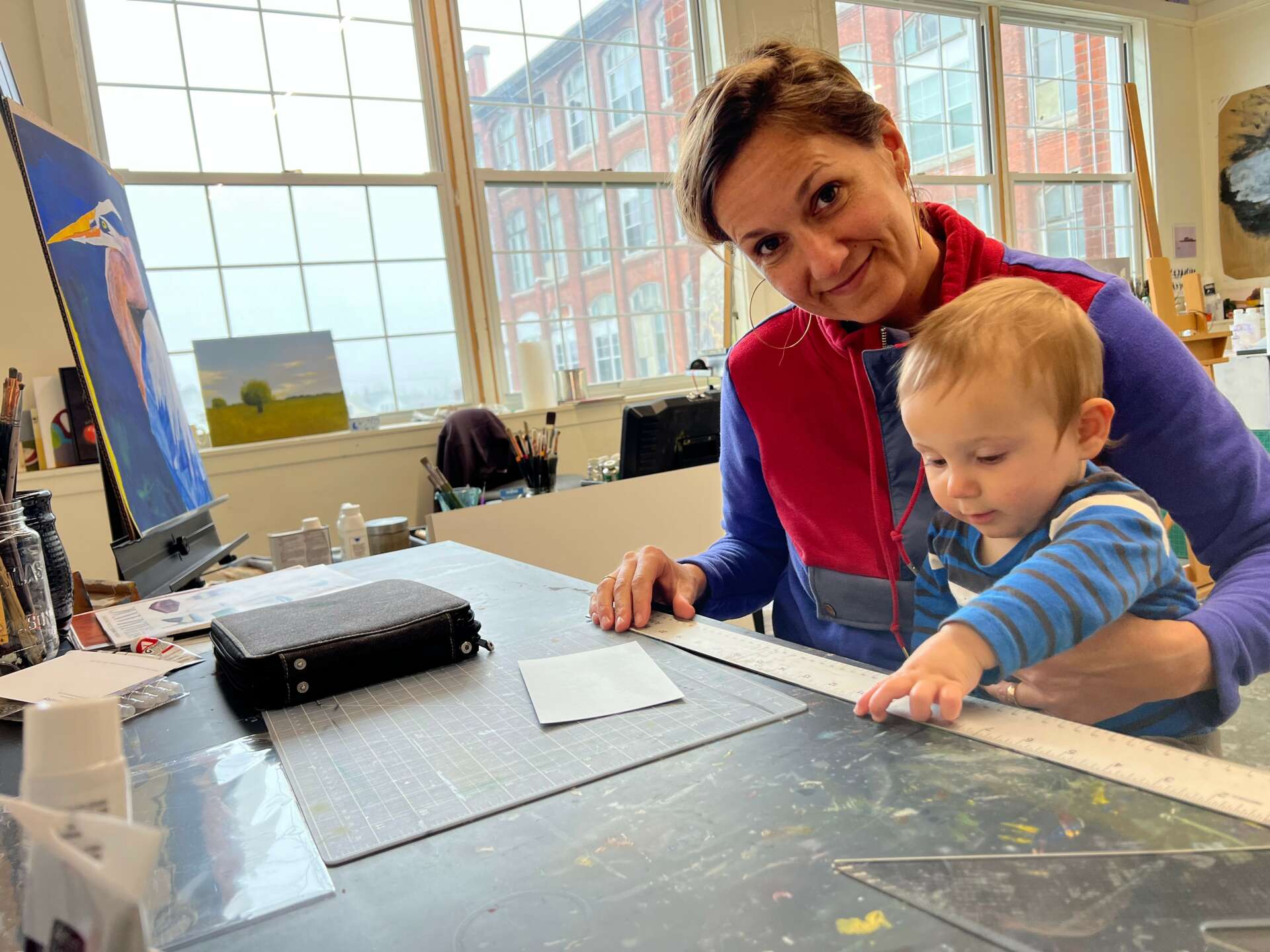We’re excited to introduce you to the always interesting and insightful Margo Connolly-Masson. We hope you’ll enjoy our conversation with Margo below.
Margo, thanks for joining us, excited to have you contributing your stories and insights. Do you wish you had waited to pursue your creative career or do you wish you had started sooner?
I have always done art in the background of my life. It wasn’t what I studied in college, or had in mind when thinking about potential careers. I always viewed it more as a hobby. I have had a TON of different jobs, ranging from cutting open cod in Alaska to extract their inner ear bones, to running an after school program in Massachusetts, to working as a college admissions counselor. I have been able to incorporate art and creativity in nearly every job that I have had, whether it be facilitating outdoor family programs focused on nature art or designing posters and flyers to advertise college recruiting events. Even though art hasn’t been in any of my job titles, my skills as an artist have been utilized in a wide variety of ways and have added value to each organization I have worked for.
Now that I am focusing more of my time and energy on being a creative, I am finding that skills that I developed in other careers are essential to being a successful working artist. I need to be able to write grant applications, communicate ideas for projects, collaborate with schools and libraries for author/illustrator visits, budget effectively, etc.
I feel that my “creative career” has been in development for my whole life, and has influenced all of my work.


Great, appreciate you sharing that with us. Before we ask you to share more of your insights, can you take a moment to introduce yourself and how you got to where you are today to our readers.
I am a collage artist and oil painter based in southeastern Massachusetts. My work is primarily inspired by the communities in which I have lived and worked. I love using my art to reflect the color and texture of the environment and people around me. When I collage, I use papers that have meaning and connection to the subject. For example, when creating an illustration for a magazine article focused on two local cities, I collected restaurant menus, city maps, visitor guides, and newspapers from the cities and used those as my “canvas.” I paint directly onto the menus, maps, etc. and then cut and glue them into a final piece.
I wrote and illustrated a children’s picture book, And Then…Glen!, which is for sale online and in several independent local bookstores. I work with schools and libraries to present my book to students and discuss creativity, exploration, and community connection. I also create calendars from my art, note cards, etc. I believe that art should not be reserved only for people who can afford to purchase a large original piece, but should be accessible at a variety of price points (including free, public art).
I am most proud of my ability to use my art to connect people to one another and to the places where they live.


What can society do to ensure an environment that’s helpful to artists and creatives?
Artists and creatives need to be paid for their time, just as someone in an office job is paid for their time. It is extremely difficult as an artist to justify carving out time to create. There are so many obstacles and expenses involved. For example, if I were working in an office, I wouldn’t be expected to rent the space where my desk is. Or buy my computer and printer, or purchase printer paper and ink, or supply all of my own pens and pencils. I wouldn’t need to spend hours applying for the opportunity to do work, and then only get paid after that work project is delivered. Or I wouldn’t spend a month working on a project and then not get paid for that work.
These are things that artists do ALL THE TIME. We have to rent studio space, buy all of our supplies, spend hours and hours (of unpaid time) applying for grants or other funding. We create work that perhaps no one ever buys, and therefore we never get paid for it.
I think that society needs to view art and creativity as a valued service that needs consistent, fair, livable support.
What do you find most rewarding about being a creative?
For me, the most rewarding aspect of being an artist is being able to make an emotional connection between my art and my audience. It is extremely special to observe someone as they see themselves and their community reflected in my artwork.
Contact Info:
- Website: https://margoconnolly.wixsite.com/margopaintsco
- Instagram: @margopaintsco


